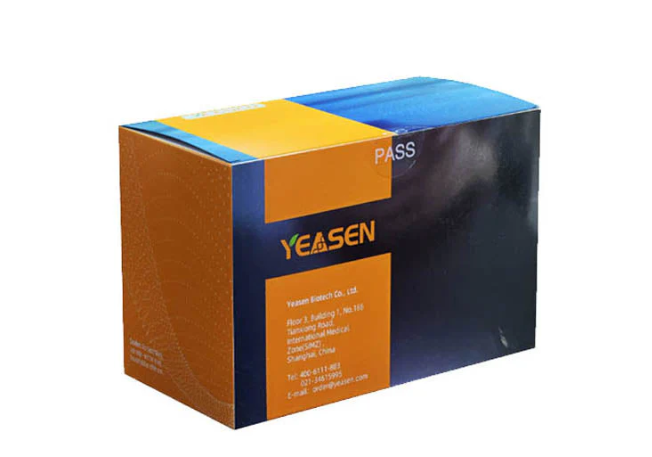Description
Hygromycin B, an aminoglycoside antibiotic synthesized by Streptomyces hygroscopicus, inhibits protein synthesis by interfering with 70S ribosomal translocation and inducing misreading of mRNA template, thus killing prokaryotes (such as bacteria), eukaryotes (such as yeasts, fungi) and higher mammalian eukaryotes.
Hygromycin resistance genes (hyg or hph) derived from Escherichia coli encode hygromycin B phosphotransferase, which detoxifies hygromycin B into a non-biologically active phosphorylated product, making it an excellent selective marker for screening and culturing prokaryotic or eukaryotic cells successfully transfected with hytromycin resistance genes. In addition, due to different modes of action, Hygromycin B is often used in combination with G418 or Blasticidin S for the selection of dual-resistant cell lines. Hygromycin B can also be used as an antiviral agent because it selectively penetrates into cells with increased membrane permeability due to viral infection and inhibits translation. It can also act as an insect-repellant via mixed with animal feed.
This product is a sterile hygromycin B solution (50 mg/mL in PBS buffer) and can be directly diluted for use with a culture medium.
Features
Standardized production, using factory mass production mode
Applications
Sterile
Screening of stably transfected cell lines
Specifications
|
CAS NO. |
31282-04-9 |
|
Molecular Fomular |
C20H37N3O13 |
|
Molecular Weight |
527.52 g/mol |
|
Purity |
>90% (HPLC) |
|
Potency |
≥1000 U/mg |
|
Structure |
|
Components
|
Components No. |
Name |
60224ES03 |
60224ES10 |
|
60224 |
Hygromycin B (50 mg/mL) |
1 g (20 mL) |
10 X 1 g(20 mL) |
Shipping and Storage
The Hygromycin B (50 mg/mL) products should be stored at 2℃ ~ 8℃ for 2 years.
Instructions
1. Commonly used screening concentration
The working concentration of hygromycin B used to screen stable transfer strains needs to vary depending on cell type, medium, growth conditions and cell metabolic rate, with recommended concentrations of 50-1000 μg/mL. For the first experimental system, a killing curve (kill curve), the dose reactivity curve, is recommended to determine the optimal screening concentration.
In general, mammalian cells: 50-500 μg/mL; Bacterial/plant cells: 20-200 μg/mL; Fungi: 300-1000 μg/mL.
2. Establishment of killing curve
Note:In order to screen stable cell lines, it is necessary to determine the minimum concentration of antibiotics capable of killing untransfected host cells. This can be achieved by establishing a killing curve (dose-response curve). At least five concentrations should be arranged.
1) Day 1: Untransformed cells are planked in an appropriate culture plate at a cell density of 20-25% and cultured overnight.
Note:The amount of inoculation cells can be increased for cells requiring higher density to detect vitality.
2) Set the concentration gradient within the appropriate range according to the cell type. Mammalian cell can set 50, 100, 250, 500, 750, 1000 μg/mL. Dilute the Hygromycin B solution 1:10 with deionized water or PBS buffer to 5 mg/mL. And then dilute the solution to the corresponding working concentration according to the following table.
|
Final Concentration (μg/mL) |
Medium Volume (mL) |
Addition Volume of 5 mg/mL Hygromycin B (mL) |
|
50 |
9.9 |
0.1 |
|
100 |
9.8 |
0.2 |
|
250 |
9.5 |
0.5 |
|
500 |
9.0 |
1.0 |
|
750 |
8.5 |
1.5 |
|
1000 |
8.0 |
2.0 |
3) Day 2: Replace with a freshly prepared medium containing the corresponding concentration of the drug. Make three parallel samples for each concentration.
4) Then replace with fresh media containing drugs every 3-4 days.
5) Conduct live cell counts at fixed intervals (such as every 2 days) to determine the appropriate concentration that inhibits the growth of untransfected cells. Select the lowest concentration that can kill the vast majority of cells within the ideal number of days (usually 7-10 days) as the working concentration for stable transfectant selection.
3. Screening of Mammalian Stably Transfected Cell Lines
1) 48 h after transfection, the cells were subcultured by screening medium containing hygromycin B at appropriate concentration (direct or diluted).
Note: Antibiotics work best on actively dividing cells. If the cells are too dense, the antibiotic will not kill the cells. Split the cells such that the cells are no more than 25% confluent.
2) Change the screening medium every 3-4 days.
3) Measure the cell colony-formation after 7 days of screening. Colony formation may take another week or more, depending on host cell type, transfection, and screening effectiveness.
4) Pick 5-10 resistant clones and transfer to 35 mm cell culture plates, and cultured with drug-containing screening medium for 7 days.
5) Replace with fresh medium without drugs for culture.
Documents:
Safety Data Sheet
Manuals
Payment & Security
Your payment information is processed securely. We do not store credit card details nor have access to your credit card information.
Inquiry
You may also like
FAQ
The product is for research purposes only and is not intended for therapeutic or diagnostic use in humans or animals. Products and content are protected by patents, trademarks, and copyrights owned by Yeasen Biotechnology. Trademark symbols indicate the country of origin, not necessarily registration in all regions.
Certain applications may require additional third-party intellectual property rights.
Yeasen is dedicated to ethical science, believing our research should address critical questions while ensuring safety and ethical standards.


